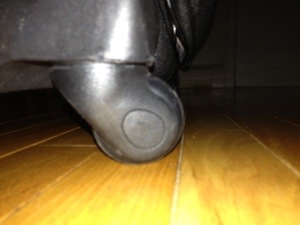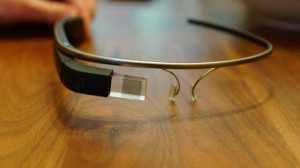When the coronavirus pandemic hit and everything was closed, and everyone sent home and ordered to stay away from each other, I thought to myself, “Well, at least I won’t have to sit through meetings for a while.” I was wrong. The video conferencing service that goes by the name of Zoom was there to make sure that even a pandemic would not stop our sacred ritual of wasting each other’s time with meetings.

What is innovative about Zoom is that you waste time not only with the meeting itself, but in joining the meeting as well. I learned this on my very first Zoom conference when I spent a half-hour trying to find the link to the meeting, sifting through daily news digests (“Batman Spotted Not Wearing a Mask”) and take-out coupons (“Fight COVID-19 with our baby back ribs!”).
I was sitting in my living room, and as I was just about to join the meeting, I noticed that behind me the kids toys were strewn all about the room. Having the Shimmer and Shine Palace bedecked with Peppa Pig figurines and piles of Disney princess gowns and magic markers without caps behind me would not look very professional, so I spent several minutes selecting a more suitable background.
After trying out several different backgrounds to find the one that best showed off my unique mixture of professionalism and panache, I selected a photo of the outer Solar System, and with a few clicks I was snuggled in between Jupiter and Saturn. Only then did I feel comfortable joining the meeting. All of my co-workers appeared on my laptop screen like talking heads on a cable news program. A little rectangle labeled with my name appeared too, but I was not in it. “We can’t see you, Mark,” someone said. I employed my usual method of dealing with computer issues and clicked lots of buttons at random while crossing my fingers, and finally my own talking head appeared…without my groovy space background.
Something must have malfunctioned, and instead of the two ruling planets, my background was the living room with the kids’ toys all about: the Shimmer and Shine Magical Light-Up Genie Palace, bedecked with a melting-pot of Calico Critters and figurines from Peppa Pig and Daniel Tiger’s Neighborhood, and sparkling Disney princess gowns all over the floor, as if there had been a fire sale at JCPenney, and magic markers without caps, and a tower of Legos that was in violation of several building codes, and about seven thousand puzzle pieces blanketing the coffee table and couch, no two pieces interlocked properly. Even in their small rectangles I could see my co-workers stifling laughs.
I started to explain that this was obviously some kind of malware designed to make good hard-working people such as myself look like they have let their kids leave their toys all over the house. “We can see you, Mark,” someone said with a stifled laugh, “but we can’t hear you.” There was more laughing, not so stifled. I played with the settings some more, and discovered that I needed to set up a microphone.
Why didn’t anyone tell me I needed a microphone? Where was I going to get a microphone? I searched on Amazon and found one – an Amazon Prime “bestseller” with a 4.8 rating and free returns – but the expected delivery date was in November and this meeting was scheduled to last no more than an hour.
I started to write out my words on paper so that I could hold them up to the camera, kind of like a silent film. I grabbed the closest writing implement — a glitter-infused red magic marker with a heart-shaped tip — but, alas, it was out of ink. As was the blue, green, orange, and purple. Markers, markers everywhere, and not a drop of ink!
I needed to find a microphone. They had gone ahead and started the meeting “while Mark sorts out his technical issues.” This was quite frustrating to me since I have always liked offering unhelpful advice on other people’s projects. I needed to find a microphone!
And then I saw it, in a corner of the room. The Disney Princess Bluetooth Portable MP3 Karaoke Machine Player. A white plastic console decorated with a composite of female leads from several Disney animated features of recent vintage, and, best of all, a corded microphone. I grabbed the microphone like a drowning man grabs a life preserver, and discovered to my glee that the microphone used a USB connection.
I plugged the microphone into my laptop and began to update everyone on the projects that I hadn’t really been working on during the lock down. But my boss interrupted me.
“Mark, I don’t understand…are you singing…is that a song from Moana?”
I stopped and realized that I had indeed been singing a song from Moana. Checking the microphone, I saw some fine print that read “Terms of Use: Only Disney songs may be sung on this device.” I shrugged my shoulders, finished the song, and decided that maybe meetings over Zoom weren’t such a waste of time after all.




